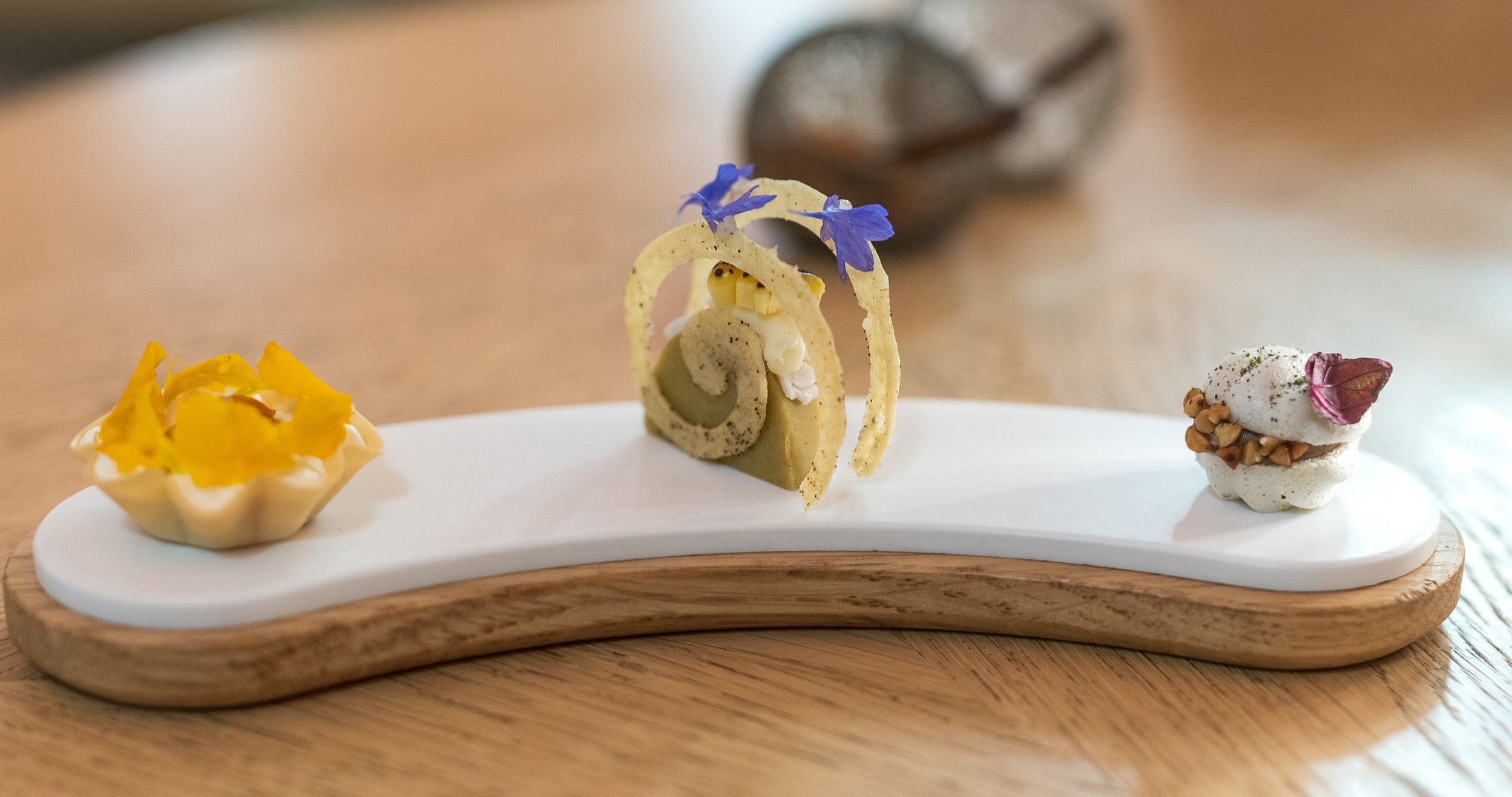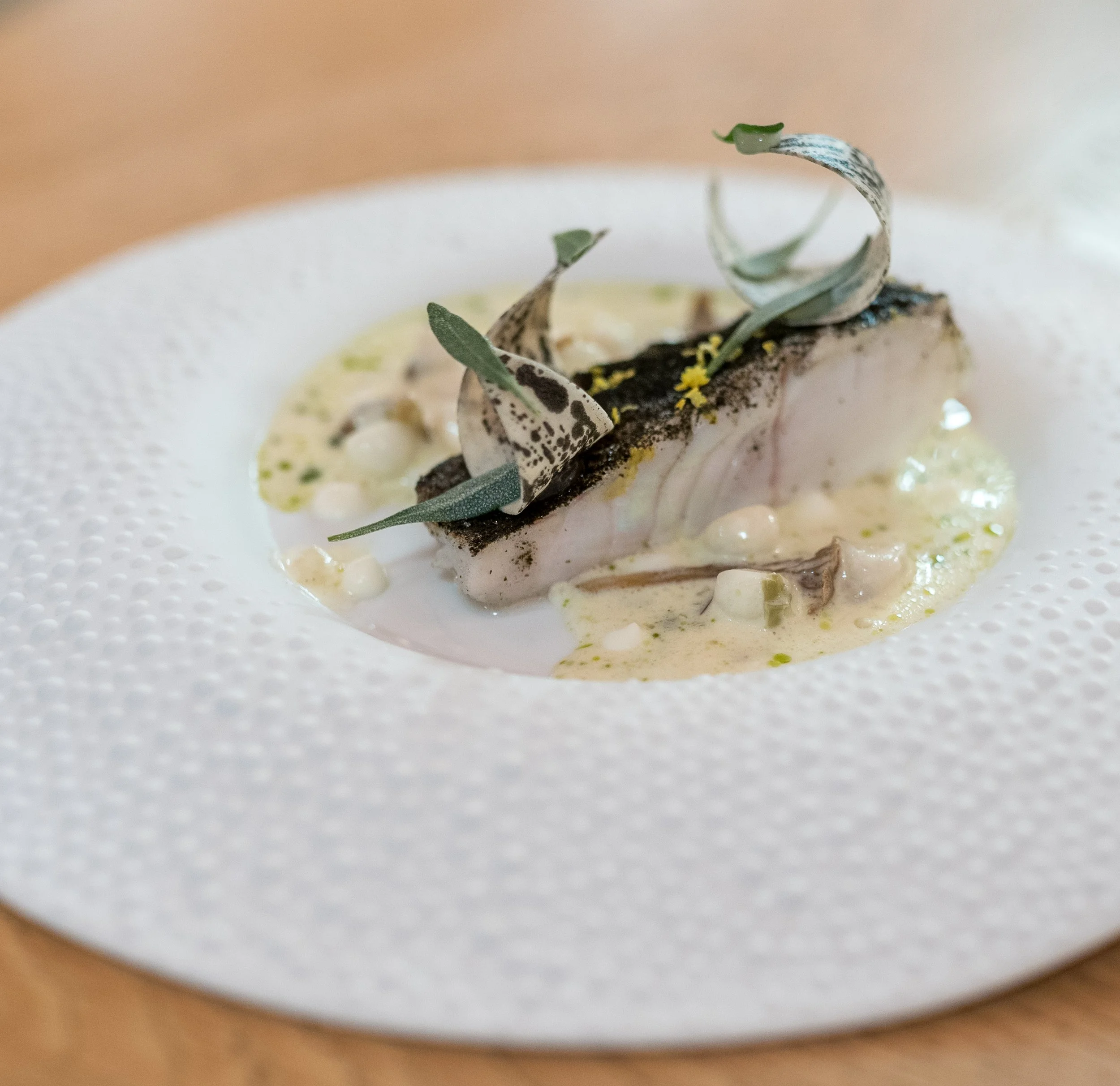Hélène Darroze at The Connaught
Hélène Darroze at The Connaught Restaurant Reivew at-a-glance
Awards: 3 Michelin Stars
Rating: 89/100
Verdict: Some Michelin restaurant’s road to three stars is meteoric, rising through the ranks in rapid succession shortly after opening. Others take a different path, stuck at two stars for years before earning the ultimate third star. I am always intrigued by the latter, wondering how a well-established kitchen is able to take their cuisine to next level and warrant the upgrade to the very upper echelon of restaurants.
Hélène Darroze at The Connaught was one of these later promotions, holding two stars for some ten odd years before earning the third in 2022. With the promotion fresh in my mind, I visited Hélène Darroze to figure out what spurred the red book to give them the third star. I left with the question mostly unanswered. Don’t get me wrong, this was refined cooking with well put together dishes built on a solid foundation of classic French cooking. It just lacked excitement with none of the dishes really feeling like they crossed into three star territory with the exception of the lobster. That is not really a criticism of the restaurant - if you visit The Connaught you will have an enjoyable meal. It just not might meet the now three star expectations (and price to match).
Price I Paid: £195 plus some hefty surcharges
Would I revisit: No
Date Visited: November 2022
Value: 10/20
Hélène Darroze at The Connaught Background
Hélène Darroze at The Connaught was London’s newest three star at the time of my visit, earning the final star in 2022 thirteen some odd years after Hélène Darroze took over the kitchen from Angela Hartnett. Beyond the three stars at The Connaught, Chef Darroze also operates two Michelin-starred restaurants in her home country of France. The food is pretty much exactly what you would expect from a French chef cooking in one of the most luxurious hotels in London, classically French with little nod to its British location beyond a few proteins sourced in the country. While it is Chef Darroze name on the restaurant, she splits her time between restaurants and was not in the kitchen during my midweek dinner. In her absence, the kitchen was run by head chef Marco Zampese who previously worked at Chef Darroze’s other restaurants.
Compared to the other two restaurants I visited during this trip to London, The Ritz and Core, the ambiance at The Connaught was not my favorite. Tables were surprisingly close together and the lighting was dim, hence the less than pristine pictures. This seemed like a dining room that would play better during lunch when light would pour through its large windows. Service was well put together with no need or want going unnoticed but with some FOH coming across as overly formal. A particular gem was Claudia who worked the room with finesse, finding a way to connect with each guest prior to taking them for a short tour of the kitchen.
There are quite a few menu choices on my visit with the “Taste of Autumn” menu costing £175 for 5-courses or £195 for 7-courses. This is reasonably priced on its face but there were no fewer than four separate menu supplements on offer ranging from £18 to have baba as a dessert, £28 for cheese or an astonishing £115 for A5 waygu. Beyond the normal supplements, there was also three white truffle courses which could be swapped into the tasting menu for £65 per course. All of this meant while the tasting menu itself was a nominally good value, if you want any premium ingredients you will be paying a very high price.
The wine menu was similarly set/up with lots of options, none of which could be considered a particularly good value. The cheapest pairing cost £160 for 7-courses while the most premium rang in at £640. Bottles of wine were not a much better value, the list being very deep but with hefty mark-ups even by London’s standards. Avoiding booze would not save you much with the non-alcoholic pairing costing £160. For those interested, you could order cocktails from the excellent Connaught bar which might be your best option given the wine pricing.
What I ate at Hélène Darroze at The Connaught
Shortly after sitting down, I was greeted with a consommé of barbecued leek (not pictured) which had a surprisingly deep flavor. This was followed by three small nibbles served together which from left to right were a sea trout tartelette with citrus, a bite with barbecued corn, Parmigiano Reggiano, voatsiperiferry pepper, and a chicken liver parfait with toasted buckwheat, long pepper, and seaweed. This was an ok set of bites, technically well made but I thought the flavors were slightly off-kilter with the corn too strong in the second bite and the parfait overshadowed in the third.
It takes a confident kitchen to start a tasting menu with a dish focused on the coco bean but that is exactly what the team at Hélène Darroze did, pairing it with with smoked eel, timut pepper and clams consommé. This was a course where you could instantly see where the chef was going, clearly putting together a dish with light, clean flavors so the guests aren’t weighed down. While the intentions were obvious, for me this was a mistake as the flavors were too muted and lacking punch. The clam consommé in particular was less powerful than expected given the deep, rich flavor profile I usually associated with consommés including the leek one served at the start of the meal. This was a dish where I think the kitchen executed it as they expected but it failed to resonate with me. For the well heeled, you could opt for an alternative dish centered on Kristal caviar for an eye watering £75.
Given it was late November, I swapped out the second course (snails) for a white truffle dish (£65 supplement) which had pheasant raviolis with foie gras and salisfy. While I tend to think white truffles are best when served most simply (think over a fried egg, beef tartare or a buttered pasta), this was really well done dish. The pheasant filled pasta was nice and moist which is (no small feat given it is easy to dry out pheasant) and the foie based sauce reminding me of Albufera sauce but a tad lighter which was a smart choice to not clash with the delicate white truffles. A very nicely put-together dish.
A surprise course was sent out next which had a gorgeously seared piece of foie gras with beetroot, sansho pepper, and koji rice. There are few joys in life that I like more than a nicely seared foie gras so this was right in my wheelhouse, the seasoning spot on and the foie having that perfect contrast between seared exterior and silky interior. Beetroot was a smart choice to pairing as well, its earthiness grounding and balancing out the dish. While this wasn’t even listed on the menu, the foie was my second favorite dish of the night.
My favorite was directly after the foie and one of the signatures of the chef, lobster with tandoori spice, carrot, citrus, and coriander. This was a really nice plate of food, the Cornish lobster being accurately cooked and the flavors well put together. The sauce work in particular was dazzling, based on a meat stock it had great depth of flavor and the use of the coral from the lobster was well judged. I even enjoyed the extra coriander added to the dish which highlighted the international flavor profile. Packed with bold and interesting flavors, this was a joy to eat.
After two very strong courses, the meal came back to earth a bit with a piece of turbot served with turnip, razor clams, chanterelle, and yuzu. The flavors here were pleasant enough but the sauce was too restrained and lacked compelxity. There were hints of chanterelles and yuzu in the dish but both seemed to be barely present, announcing themselves timidly.
The main course was a very generously sized piece of guinea fowl with onion, ale, capers. I always find guinea fowl, which tastes similar to chicken but more flavorful, a treat if cooked well and thankfully it was here. Gorgeous moist meat with a farci wedged between beautifully crisped skin - this was top notch cussion from the kitchen at Hélène Darroze. While the bird was cooked flawlessly, I struggled with the overall composition of the plate as I couldn’t seem to assemble the perfect bite even though the components seemed to be there. The portion of fowl was also too large for such a lengthy tasting menu. This might seem like a weird complaint (and it is) but the enjoyment of such a beautifully cooked bird is taken down a few notches when you are struggling to finish the last few bites. For those who don’t like guinea fowl, you could opt for a dish using A5 wagyu for a steep £115 supplement.
After the solid main, we transitioned to the pastry section with a dish of vanilla with corn, banana, mango, lime. This was quite interesting, the flavors reminding me a bit of a riff on banana foster’s but with a more tropical note from the mango and lime. While pleasant enough, this was a dish that needed some more editing as the corn was one flavor too many.
For my final dessert, I went with a classic of Hélène Darroze, a baba with raspberry, long pepper, Sarahawk pepper, and armagnac. If you ignore the £18 supplement which seemed an unnecessary tax for guests who want to try a signature of the kitchen, this was a very good rendition of a classical French pastry. The baba was nice and moist, filled with raspberries, and topped with chantilly cream. In an interesting twist, the cream was laced with two different kinds of peppers which gave it a gentle aromatic spice. It sounds weird but it was well judged to not be so strong it distracts from other flavors. In lieu of the typical rum, three different Armagnacs of varying ages were offered tableside to finish off the dish. While I found the Armagnac a tad strong, this was a pitch perfect rendition of one of the classics of French pastry.












